What is more relaxing and energizing at the same time than watching the waves and ripples on the sparkling water? A fresh ocean breeze, fluttering through the skies, fills our souls with joy and inspiration.
Learn how to paint the ocean by creating a simple watercolor seascape.
What you’ll need
1. A sheet of cold pressed watercolor paper, about 10″ x 14″ in size.
2. Three round brushes: a large one (#12), a medium one (#8) and a very small brush for detail work (a fine-tipped #4 brush) .
Colors
- Cobalt blue
- Naples yellow
- Cadmium red
- Venetian red
- Pthalo blue
- Prussian green
Note: The last two colors will be used for painting the water. If desired, substitute other blue and greenish-blue colors that are bright, clear and high intensity.
Step 1: Pencil sketch
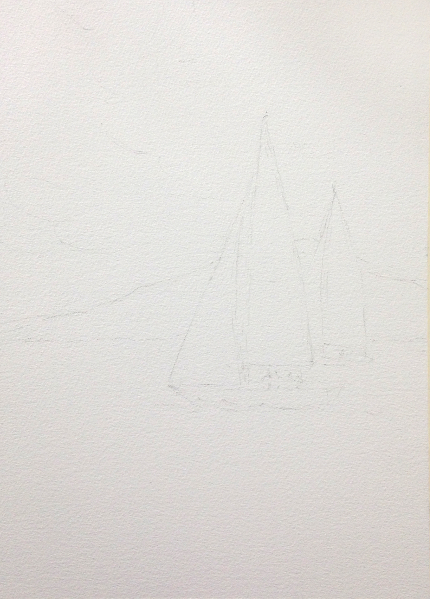
Do a very light preliminary contour drawing. Mine is so subtle that it can barely be seen in the picture.
Step 2: Paint the sky
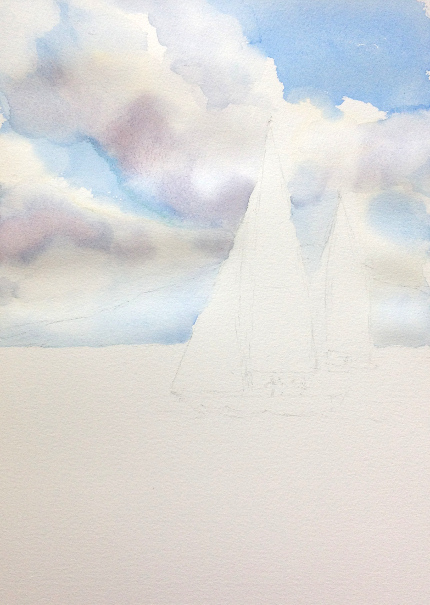
Wet the paper above the horizon line, avoiding only the foreground, and wait until the paper absorbs the water a little bit.
With a bigger brush, apply a few light brushstrokes of Naples yellow to position the clouds. Load the brush with cobalt blue and paint the top edge of the clouds. Gently soften some of the edges with a clean, damp brush to achieve a balance of hard and soft edges. Continue to paint the blue sky, defining the undersides of the clouds.
While the paper is still wet, paint shadows on the clouds, using the mixture of cobalt blue and cadmium red.
Step 3: Paint the water
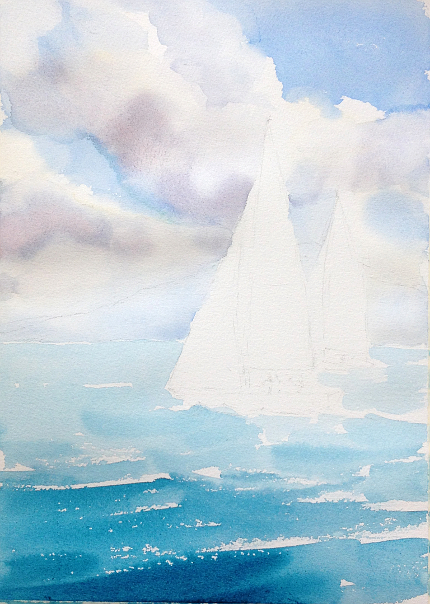
Load the big brush with a lot of diluted pthalo blue and do the first pass, using wet-on-dry technique (wet paint applied on dry paper).
Alternate using the full body of the brush with using only the side of its hairs, and skim over the paper lightly. Thanks to the texture of the paper, you’ll see that small areas of paper are kept untouched, which creates the illusion of sparkling ocean water.
While the wash is still wet, deepen the value on the foreground, adding a few quick brushstrokes of thick pthalo blue and Prussian green. This will bring the foreground forward.
Step 4: Paint the background and the waves

Paint the hills on the background, using a mixture of cobalt blue, Naples yellow and a drop of cadmium red. Keep the color muted and soften the edges to suggest distance.
Make sure the ocean area is completely dry, then paint some waves and ripples. To create depth, the brushstrokes on the foreground should be bigger and brighter than ones on the distant areas.
Step 5: Paint the boats
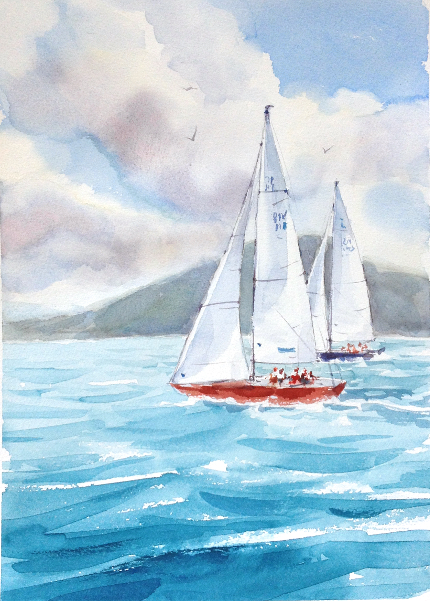
Using medium and small brushes, paint the boats and people in them. Use a mixture of cadmium red and venetian red for the color accent. Don’t work too hard on the figures — keeping them loose will help to achieve a more natural look.
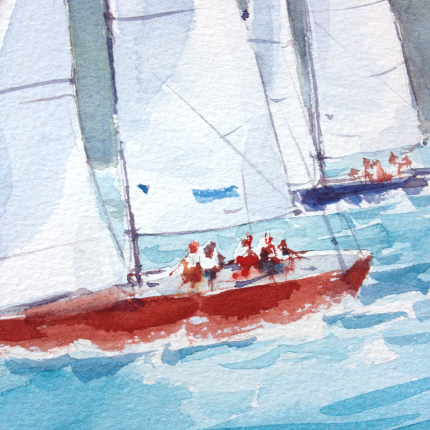
You may want to deepen the value of the hills to make them stand out better. Also, add a few brushstrokes on the foreground to bring it forward even more.
Now make any final touch-ups, if needed. And don’t forget to paint a few seagulls in the sky to add more life to the composition.

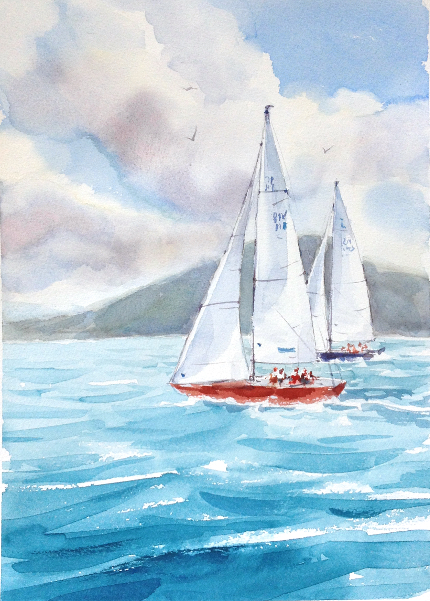
Share tips, start a discussion or ask one of our experts or other students a question.
No Responses to “Paint a Watercolor Seascape in 5 Easy Steps”